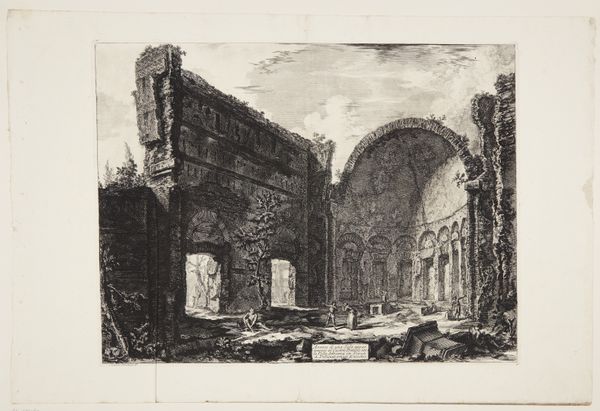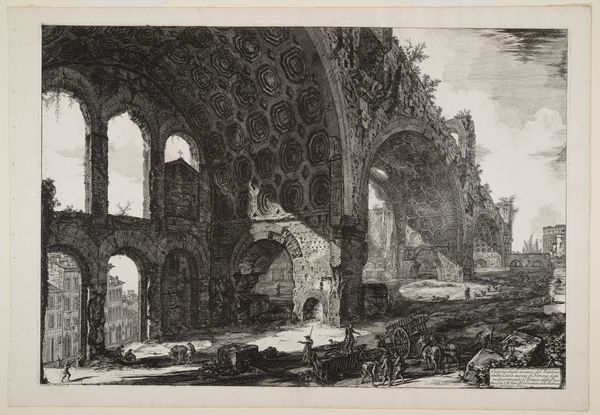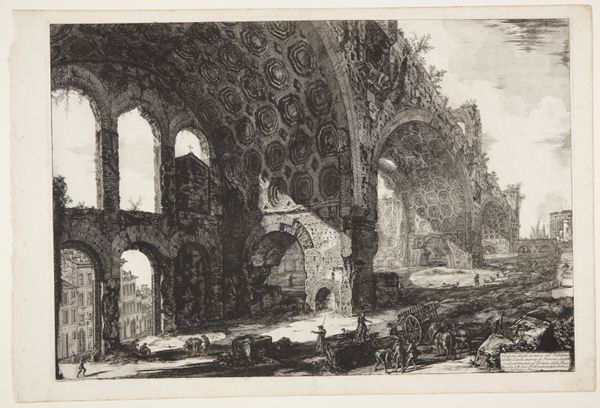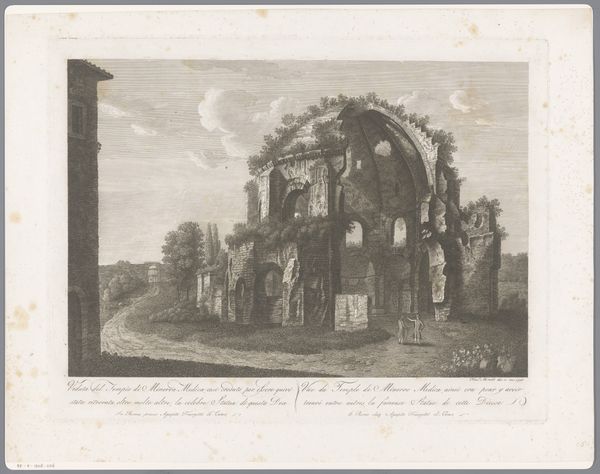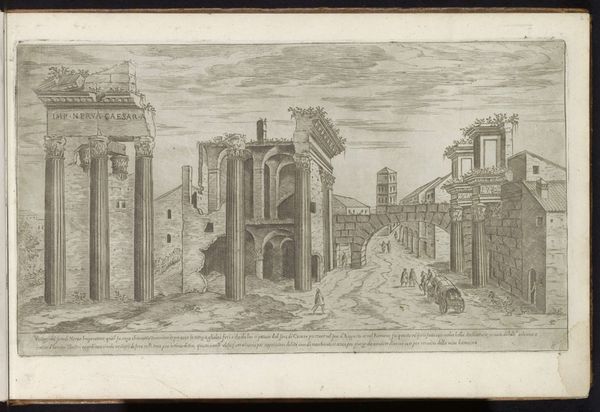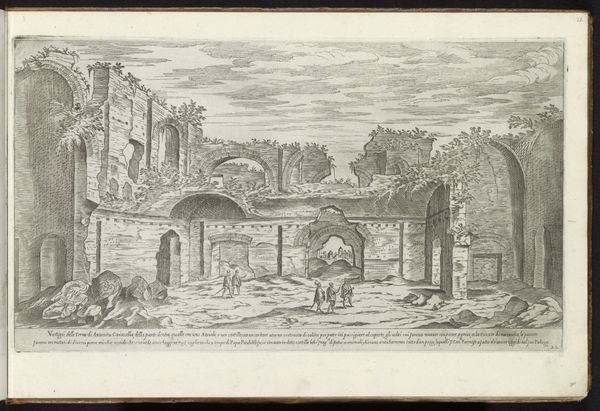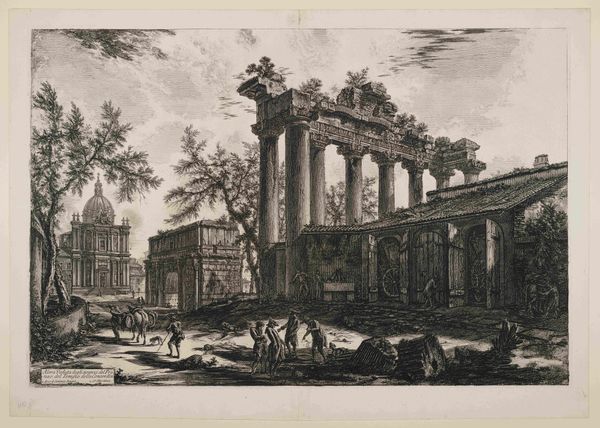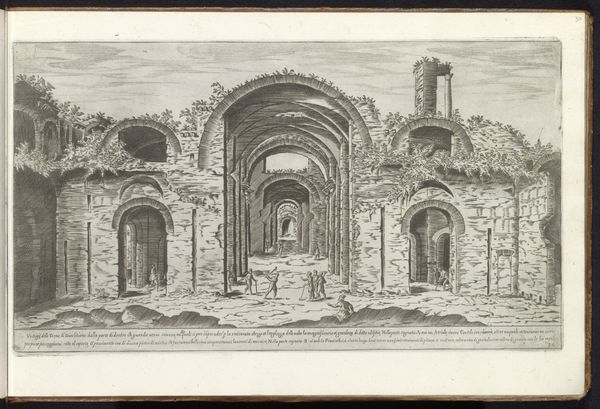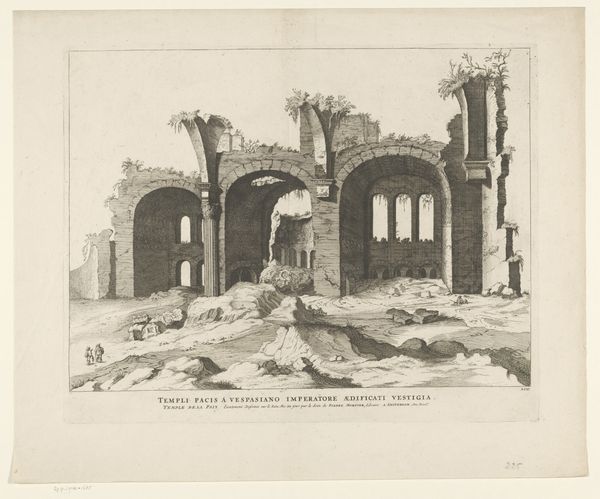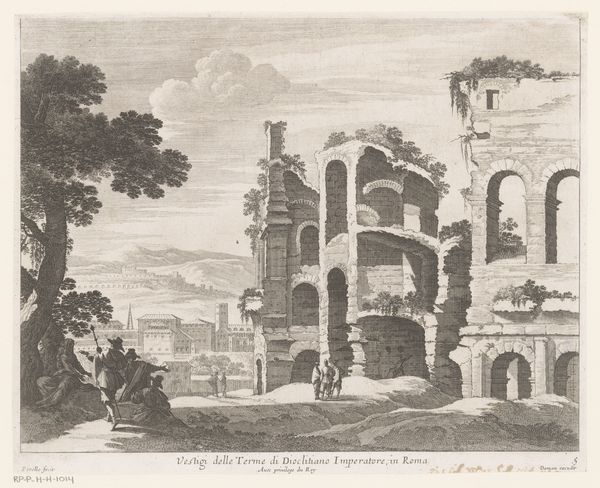
print, etching, engraving, architecture
#
neoclacissism
# print
#
etching
#
landscape
#
etching
#
ancient-mediterranean
#
italy
#
engraving
#
architecture
Dimensions: 17 3/4 x 26 5/16 in. (45.09 x 66.83 cm) (plate)21 3/8 x 30 3/16 in. (54.29 x 76.68 cm) (sheet)
Copyright: Public Domain
Curator: This etching is entitled "Villa of Maecenas at Tivoli," crafted in 1763 by Giovanni Battista Piranesi, residing here at the Minneapolis Institute of Art. Editor: It’s striking, isn't it? The density of the architecture, and the textures that almost appear sculpted, yet it's all lines etched into a plate. Gives it a real sense of gravity and antiquity. Curator: Indeed. Piranesi was renowned for his masterful manipulation of line and tone. Looking at the materiality of the printmaking, you see how his meticulous process contributes to the perceived weight and scale of the structure, blurring lines between the "high art" of architecture and the reproducible craft of printmaking. Editor: Absolutely. Think of the social implications: Piranesi is not just documenting this ruin; he's circulating a vision of Roman grandeur, and a certain melancholic reflection on the past. What was the perception of ancient structures like this during that time? Curator: Well, during the 18th century, sites like the Villa of Maecenas became pivotal touchstones for Neoclassicism. This interest sparked exploration in the physical processes that contributed to not only the depiction but also the idealization of such spaces and, naturally, to questions of production and the cultural and artistic impact. The prints were commodities circulating images of Roman splendor and, in turn, reinforcing political power. Editor: Right. The Roman past was often used to legitimize contemporary political agendas. Plus, consider who was buying these prints—likely wealthy patrons, participants in the Grand Tour—and how owning such images reinforced their status. This all reveals much more than Roman ruins—it speaks to art as a form of political imagery. Curator: Exactly. And think about the labor involved: the quarrying of the stone, the construction of the villa in its own time, the careful and demanding printmaking process… all these human acts layered into this image! The artist becomes the middleman of materials, time and the socio-economic landscape. Editor: That's such an essential reminder: these images weren't simply plucked from the earth. Piranesi wasn’t neutral, neither are we for that matter. He and his social status directly impact what is chosen to be showcased, and furthermore how this "showcasing" impacts future receptions. This helps reveal how images such as these served specific cultural functions then, and continue to today. Curator: Seeing this, knowing what we know, allows us to more carefully consider the dialogue between the materials, the artwork, and the history around it. Editor: A lasting point well made: and to not overlook our dialogue as observers into a broader and continued understanding.
Comments
No comments
Be the first to comment and join the conversation on the ultimate creative platform.
